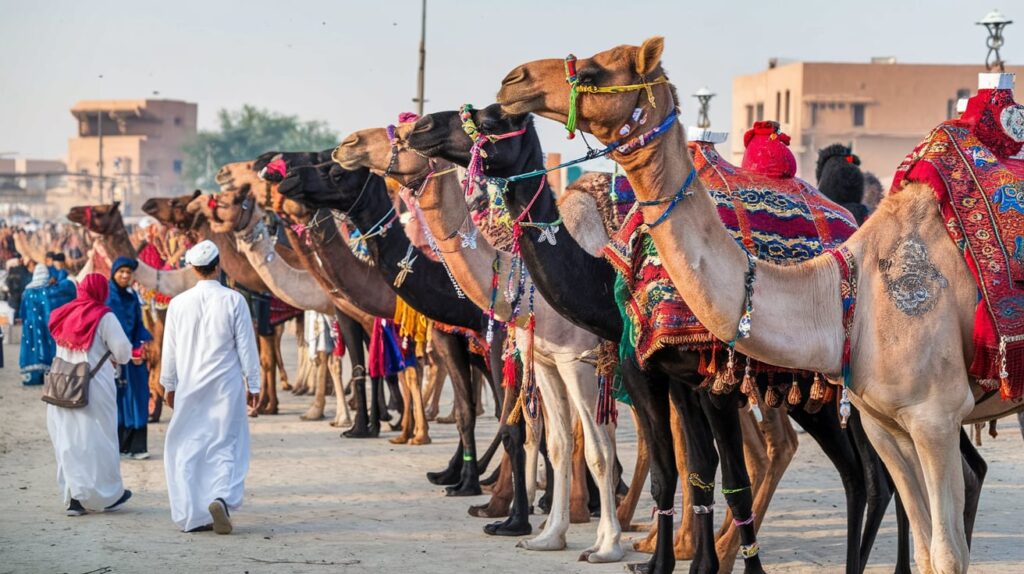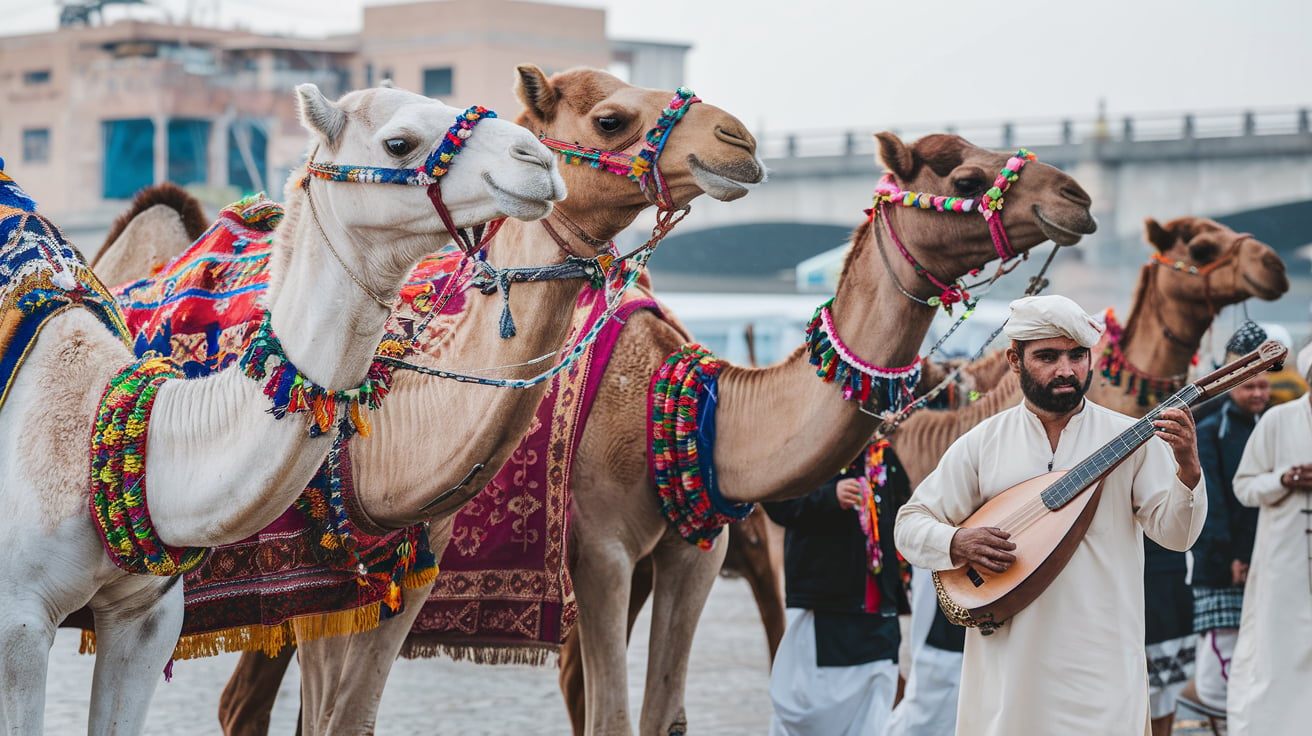In many parts of the world, festivals are more than just a way to celebrate culture. They can also be powerful tools for economic growth and development. One great example of this is the camel festivals. These festivals, which are held in various countries, especially in the Middle East and North Africa, are becoming increasingly popular. Camel festivals are not just cultural events; they are also drawing investors and promoting economic growth in these regions. In this article, we will explore how camel festivals attract investors and help to promote growth in easy-to-understand language.

1. What is a Camel Festival?
A camel festival is an event that celebrates the camel, an animal that has been important to people in desert regions for centuries. Camels are known as the “ships of the desert” because they can travel long distances across hot, dry lands without needing much water. Many countries, especially in the Middle East, North Africa, and parts of Asia, have camel festivals to showcase the significance of these animals.
At a camel festival, you can expect to see camel races, beauty contests for camels, traditional music and dancing, and sometimes even trading of camels. There may also be food stalls, local handicrafts, and demonstrations of traditional skills such as weaving or falconry. Some camel festivals last for several days and attract people from all over the world.

2. Why Are Camel Festivals Important?
Camel festivals are important for several reasons:
- Cultural Heritage: They help preserve and promote the traditions and cultures of the regions where camels have been a vital part of life for centuries. People can learn about their history, celebrate their customs, and pass them on to younger generations.
- Tourism: Camel festivals attract visitors from around the world who are interested in seeing something unique. Tourists bring money into the local economy by spending on hotels, restaurants, transportation, and souvenirs.
- Community Pride: These festivals often bring together people from different areas, encouraging a sense of community and pride in their heritage.
- Investment and Growth: Camel festivals are also attracting investors, leading to economic growth and development in the areas where they are held.
3. Camel Festivals and Investment Opportunities
In recent years, camel festivals have become more than just cultural events. They are now seen as opportunities for business and investment. Investors from different countries and industries are showing interest in these festivals for several reasons.
a. Tourism and Hospitality Industry
Camel festivals bring in tourists, and this means there is a demand for hotels, restaurants, and other services. Investors are taking advantage of this by building new hotels, resorts, and tourist facilities in areas that host camel festivals. This creates jobs for local people and boosts the economy.
For example, in countries like Saudi Arabia and the United Arab Emirates (UAE), camel festivals attract thousands of tourists every year. Many of these tourists stay in nearby hotels, visit local attractions, and spend money on food, transportation, and souvenirs. This has led to a boom in the tourism and hospitality industry in these regions.
Investors see the potential for growth in this industry and are putting money into building new hotels, improving transportation infrastructure, and developing tourist attractions. This, in turn, creates jobs and helps local businesses thrive.

b. Real Estate Development
The increase in tourism has also led to a demand for more real estate development. Investors are buying land and building hotels, shopping malls, and entertainment centers near camel festival locations. This not only boosts the local economy but also helps to improve infrastructure in the region.
For instance, in some parts of the Middle East, areas around camel festivals have seen a rapid rise in real estate prices. Investors are buying land, developing properties, and selling them at a profit. This has encouraged more real estate development, creating job opportunities and bringing in more money to the local economy.
c. Business Opportunities for Locals
Camel festivals also provide business opportunities for local people. Many small businesses, such as food vendors, souvenir shops, and tour operators, make a lot of money during these festivals. Investors often support these businesses by providing funding or resources to help them grow.
For example, during a camel festival, a local artisan might sell handmade items such as carpets, jewelry, or clothing. An investor might see potential in this artisan’s work and decide to invest in their business. This could involve providing money to help the artisan buy more materials, expand their shop, or market their products to a wider audience.
This type of investment helps small businesses grow and thrive, leading to economic growth in the region.
4. How Camel Festivals Promote Economic Growth
Camel festivals are playing a key role in promoting economic growth in several ways:
a. Creating Jobs
Camel festivals create jobs for people in the local community. These jobs can be directly related to the festival, such as working as event organizers, security personnel, or performers. However, they can also be in related industries, such as hospitality, tourism, and retail.
When more tourists visit an area for a camel festival, there is a need for more workers in hotels, restaurants, and transportation services. This leads to more employment opportunities for people in the region. Moreover, the construction of new hotels and tourist facilities creates jobs in the construction and real estate industries.
b. Boosting Local Businesses
Local businesses often see a significant increase in sales during camel festivals. Food vendors, souvenir shops, and tour operators can make a lot of money from the influx of tourists. Additionally, camel festivals provide a platform for local artisans and craftsmen to showcase their work and sell their products to a larger audience.
For example, a local craftsperson might make traditional items like pottery, carpets, or jewelry and sell them at the festival. Tourists who visit the festival are often interested in buying these unique, handmade items, which helps local businesses grow.
This increase in sales and demand helps local businesses expand, hire more workers, and contribute to the overall economic growth of the region.
c. Encouraging Infrastructure Development
To accommodate the large number of tourists and participants at camel festivals, there is often a need for better infrastructure, such as roads, hotels, and transportation services. Governments and private investors are investing in improving infrastructure in these regions, which benefits not only the festivals but also the local population.
For example, new roads and highways may be built to connect festival locations to major cities, making it easier for tourists to visit. Additionally, airports may be expanded or improved to accommodate the increase in international visitors. These infrastructure improvements help promote economic growth by making the region more accessible and attractive to tourists and investors.
d. Attracting International Investment
Camel festivals are now attracting the attention of international investors, who see the potential for growth in the regions where these festivals are held. Investors from different countries and industries are putting money into tourism, hospitality, real estate, and other sectors that benefit from the festivals.
For example, large companies from countries like the United States, China, and Europe are investing in the Middle East and North Africa, building hotels, shopping malls, and entertainment centers near camel festival locations. This influx of international investment brings new jobs, technology, and expertise to the region, helping to promote economic growth.
5. Examples of Successful Camel Festivals
Several countries have successfully used camel festivals to promote economic growth and attract investors. Here are a few examples:
a. King Abdulaziz Camel Festival – Saudi Arabia
The King Abdulaziz Camel Festival in Saudi Arabia is one of the largest and most famous camel festivals in the world. Held annually, the festival attracts thousands of participants and spectators from around the world. The festival features camel races, beauty contests for camels, and cultural events that showcase Saudi Arabian traditions and heritage.
The festival has had a significant impact on the local economy, attracting investors from the tourism, hospitality, and real estate industries. The festival has also led to the development of new infrastructure, including hotels, roads, and entertainment centers, boosting economic growth in the region.
b. Al Dhafra Camel Festival – United Arab Emirates
The Al Dhafra Camel Festival, held in the United Arab Emirates, is another example of a successful camel festival that promotes economic growth. The festival celebrates the Bedouin culture and heritage of the UAE, with events such as camel races, beauty contests, and traditional music and dance performances.
The festival attracts thousands of tourists from around the world, boosting the local economy and creating jobs in the tourism and hospitality industries. Additionally, the festival has attracted international investors, leading to the development of new hotels, resorts, and tourist attractions in the region.
c. Pushkar Camel Fair – India
The Pushkar Camel Fair, held in the town of Pushkar in the Indian state of Rajasthan, is one of the largest camel festivals in the world. The festival attracts thousands of visitors, including tourists from around the world, who come to see the camel races, beauty contests, and cultural events.
The festival has become a major tourist attraction in Rajasthan, leading to the development of new hotels, restaurants, and tourist facilities. Investors have taken notice of the festival’s success and are putting money into the region, promoting economic growth and creating jobs for the local population.
6. The Future of Camel Festivals
As camel festivals continue to grow in popularity, they will likely play an even bigger role in promoting economic growth and attracting investors. Governments and private investors are recognizing the potential of these festivals to boost tourism, create jobs, and encourage infrastructure development. In the future, we can expect to see even more investment in camel festivals and the regions where they are held.
Additionally, camel festivals can serve as a model for other cultural festivals around the world. By promoting cultural heritage and attracting tourists, these festivals have the potential to boost economic growth in other regions as well.
Conclusion
Camel festivals are more than just cultural celebrations; they are powerful tools for economic growth and development. By attracting tourists,
